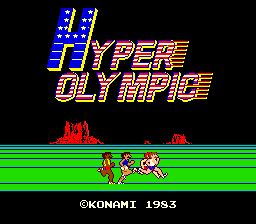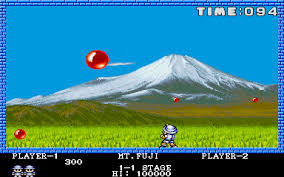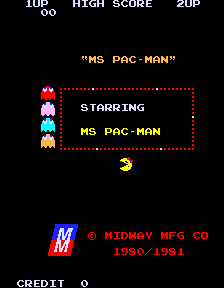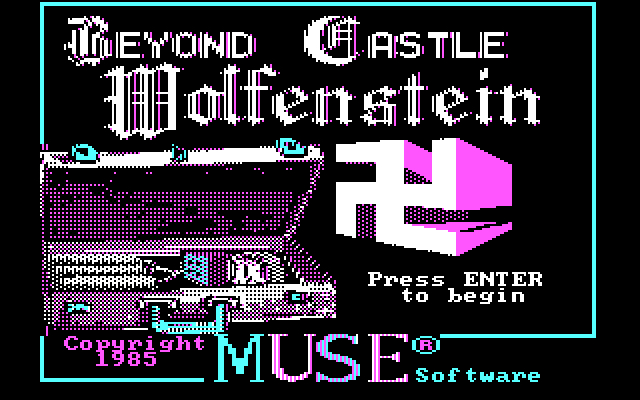( Ⓒ 1986 Taito.
After a sudden alien assault, the spaceship has been destroyed and the only survivor, the small 'Vaus' space vessel, has been mysteriously trapped in another dimension by an unknown enemy. The player is charged with helping the 'Vaus' overcome the security systems, as well as the many enemies that guard them, before finally finding and destroying 'DOH', the alien responsible for the attack.
is an update of the early ball and paddle video games - and specifically of Atari's 1978 classic, "Super Breakout" - in which the player takes control of a paddle at the bottom of the screen and must use it to deflect a ball into rows of bricks at the top of the screen, thus destroying them and, eventually, clearing the screen to progress to the next level.
As well as impressive and colourful graphics, introduced a number of new elements to the classic bat 'n' ball gameplay. Certain bricks, when destroyed, would release a power-up - in the form of a falling capsule. the player had to catch the capsule to retrieve the power-up. Among the many enhancements the power-ups provided were an increased 'bat' size, multiple balls, 'sticky' ball (which would stick to the bat and could be released when the player chos Ⓔ and even a laser, which allowed the player to shoot the bricks.
- TECHNICAL -
Prom Stickers : A75
Main CPU : Z80 (@ 6 Mhz), M68705 (@ 500 Khz)
Sound Chips : AY8910 (@ 1.5 Mhz)
Players : 2
Control : paddle
Buttons : 1
=> FIRE - Used to launch the energy ball at the start of each new round and each new life, to relaunch the energy ball after it is caught by the vaus when the C ('Catch') pill is in effect, and to fire lasers when the L ('Laser') pill is in effect.
- TRIVIA -
has remained a popular game and is commonly cloned by aspiring game developers in freeware and shareware titles. Many companies have also regularly cloned the game in arcades.
's popularity led to it being featured in "Rainbow Islands - The Story of Bubble Bobble 2", which has a whole level (4 stages in all) dedicated to the game, including DOH as the level boss.
Nick Mollison holds the official record for this game on extremely hard settings with 1,156,930 points on September 7, 2008.
Zack Hample holds the official record for this game on normal settings with 1,658,110 points on March 13, 2000.
Official releases :
Taito's
Taito America's
Taito's Tournament
Bootleg releases :
Tayto's
Game Corporation's
Hack releases :
Two-Bits Score's Plus
Game Corporation's Block
SPA Co.'s Block II
Paddle 2
- UPDATES -
The Japanese version supports cocktail mode whereas the others don't.
- SCORING -
Points are scored for destroying bricks and killings aliens.
- TIPS AND TRICKS -
• Pill descriptions :
S - Slow : slows down the energy ball.
L - Laser : enables the vaus to fire laser beams.
C - Catch : catches the energy ball and shoots it when you want it.
B - Break : allow player to move to next playfield.
E - Expand : expands the vaus.
P - Player : gains an additional vaus.
D - Disrupt : splits the energy ball into three particles.
• The power pills are completely random except that the extra life and warp pills are twice as unlikely to occur. Only one extra life pill is possible per "vaus". If the pill randomizer selects a duplicate pill based on the last pill dropped, a multi-ball pill is substituted. Thus, the multi-ball pill is the only one you can get twice in a row. The randomizer uses player score as the seed, so it is possible to control which pill is dispensed by purposely breaking pill dispensing blocks with specific scores displayed.
• On each level, the ball will not speed up completely until it hits the back wall, so :
1) Try to remove bricks from the bottom up, or punch a hole through thicker areas of bricks rather than go straight through (e.g. take out the left side of level 2 rather than the single block at the right as you will catch far more pills).
2) If you have collected a lot of S pills and the ball has been in play for a bit of time, be prepared for a sudden speedup.
• Also, the D token speeds up the balls and is pretty useless on most levels (the one with the enclosed diamond is the only good example I can think of).
• As only one pill can fall at a time, multiple balls can reduce your potential score quite drastically. Every pill is worth 1000 points. For the first few levels, get every pill you can, but do not use the special powers. You will get a lot of extra ships and should get a gray P or two - thereby starting early with 6 or 7 ships.
• In the final level, where you face DOH himself, you should get 15 hits (1000 points per hit) on DOH/per man until you defeat DOH with the 16th hit on your last man to end the game.
- SERIES -
1. (1986)
2. - Revenge of DOH (1987)
3. - DOH It Again (1997, Nintendo Super NES)
4. Returns (1997)
- STAFF -
Game designed by : Akira Fujita (AKR)
Programmed by : Yasumasa Sasabe (SSB)
Director of hardware & co-programmer : Toshiyuki Sanada (SND)
Assistant programmer : Toru T. (TOR)
Graphic designer : Onijust H. (ONJ)
Sound composer : Hisayoshi Ogura
Sound effects : Tadashi Kimijima
Pattern designer : Akira Iwai
- PORTS -
• Consoles :
Nintendo BS ("BS ") [might be a prototype]
Nintendo Famicom (1986)
Nintendo Super Famicom (1997)
Nintendo DS (2007, " DS")
• Computers :
PC9801 (1986 - Taito)
PC [MS-DOS] (1986)
MSX (1986)
BBC B (1987, "" - Imagine)
Thomson TO7 (1987)
Tandy (1987)
Commodore C64 (1987)
Sinclair ZX Spectrum (1987)
Apple II (1987)
Atari 800 (1987)
Atari ST (1987)
Commodore Amiga (1987)
Amstrad CPC (1987)
Amstrad CPC (1988, "Les D?is de Taito")
Amstrad CPC (1988, "Taito Coin-Op Hits")
Thomson M05
Thomson TO8
- SOURCES -
Game's rom.
Machine's picture.
아케이드, 알카노이드(세계판) 벽돌깨기
|
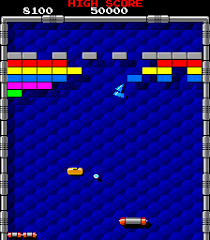
(1986)-650d6c782c9f81.35839493.png)
(1986)-650d6c782fc776.52607261.png)
(1986)-650d6c78315507.26474484.png)
(1986)-650d6c78327919.89100924.png)
(1986)-650d6c78335dd3.10170921.png)
(1986)-650d6c78344f94.79610346.png)
(1986)-650d6c78352b11.99448204.png)
(1986)-650d6c78360033.88608896.png)
(1986)-650d6c7836cb90.95119398.png)
(1986)-650d6c7837af39.68309480.png)
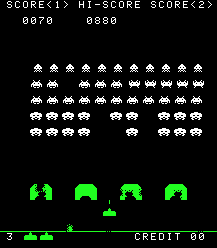
(1984)-20230913-123336-68c7fca1e3bba5e49ec90847dcdd456b.png)
-20230912-142417-0a8b2799af5e9b658b8fdb0558fc99c8.png)
-20230915-132956-f6ada47e77d9937a5af80b8f4c3826cf.png)
